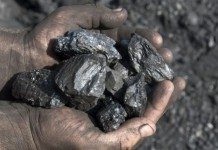
[miningmx.com] — THE fallout from Japan’s nuclear crisis will hit global demand for uranium, but will also negatively affect supply and the uranium market will remain in deficit from 2011 up until 2020.
That’s according to RBC Capital Markets analysts Adam Schatzker and H Fraser Phillips who – in a recently published research report – predicted uranium prices would start to recover in the second half of 2011.
They said: “Based on our forecast of available uranium supplies (mine sourced and non-mine sourced) we do not think that there is sufficient uranium to cover the needs of 2018 to 2020, and certainly not beyond that time frame.
“As a result we expect that, at some point in the next 12 to 18 months, utilities will begin to see an increasingly tight long-term contract market to the point where there is all but no supply availability. This, in our view, will be the stimulus that will cause the uranium price to recover.”
The bulk of the world’s uranium supply is purchased by power utilities on long-term contracts, and not on the spot market.
The analysts said: “The long-term price indicator has remained relatively robust – currently $72 per pound – and we anticipate it will continue to outperform the spot market for the next 24 months.
“However, we do not think the current long-term price properly reflects the long-term fundamentals of the uranium industry.”
The analysts said they had reduced their forecast on total uranium demand between 2011 and 2020 by about 125 million pounds from their previous estimate published on March 9.
But they have also dropped their forecast on total supply over this period by 49 million pounds, and predict the deficit between uranium demand and supply will be more than 80 million pounds by 2020.
They said: “We believe that the new supplies needed to fill the growing deficit will require uranium prices higher than $80/lb in order to provide the incentive to explore for, finance and develop new projects.”
The spot price of uranium fell rapidly from around $68/lb when the earthquake struck Fukushima to bottom at $49.29/lb on March 16, from where it has recovered to current levels just under $60/lb.
The analysts said: “Once the panic sellers stopped placing material into the spot market, the underlying tightness again dominated and the uranium price began to rise again.’
While noting the negative reaction from various countries in terms of shelved or delayed nuclear projects, the analysts’ overall assessment was that “the current leading nuclear builders – China, Russia, India, South Korea – are unlikely to change their long-term plans despite the magnitude of the tragedy in Japan’.
On the supply side, the analysts highlighted the likely impact of the Fukushima disaster on Australia, which has some of the best potential for the development of large new uranium projects.
They said: “In the aftermath of the Fukushima disaster we think that the level of acceptance for new uranium projects in Australia is significantly lower than it was before.
“In our view, the potential for delays or project cancellations is significant and may have a marked impact on the outlook for uranium supply growth in this decade and the next.’
The analysts also pointed to shortfalls in anticipated supply caused by problems with developing uranium projects.
They said: “Looking back at our supply forecasts from mid-2006 to present, we have observed a very clear pattern; the expected supply from 2006 to 2010 has dropped dramatically.
“Most of these shortfalls have been driven by either problems with existing operations or delays in new mine production, with an emphasis on the latter.
“We do not see any reason why the problems that plagued new supply between 2006 and 2009 should disappear; rather, we think there is a good chance that future supply forecasts will again disappoint. We think this fact needs to be reflected in the current uranium price and, in our view, it is not.’
The analysts said: “We believe that most uranium producers have sold the vast majority of their production through to at least 2016. Yet there remains a substantial portion of demand uncovered (30% to 40%) between 2016 and 2019.
“Some of the newer entrants to the producer category – such as Paladin, Denison and Uranium One – likely have material available for contracting in those years but, according to our estimates, they will not have enough to satisfy the forecast demand.
“We think that in late 2011 utility requests for contracted material in 2016 and beyond will be met with fewer and fewer offers, and then perhaps none.
“We believe it is this sequence of events that will provide a significant stimulus to both the spot and term prices and bring them to a level that is sufficient to incentivise new exploration, development and, eventually, production.’











